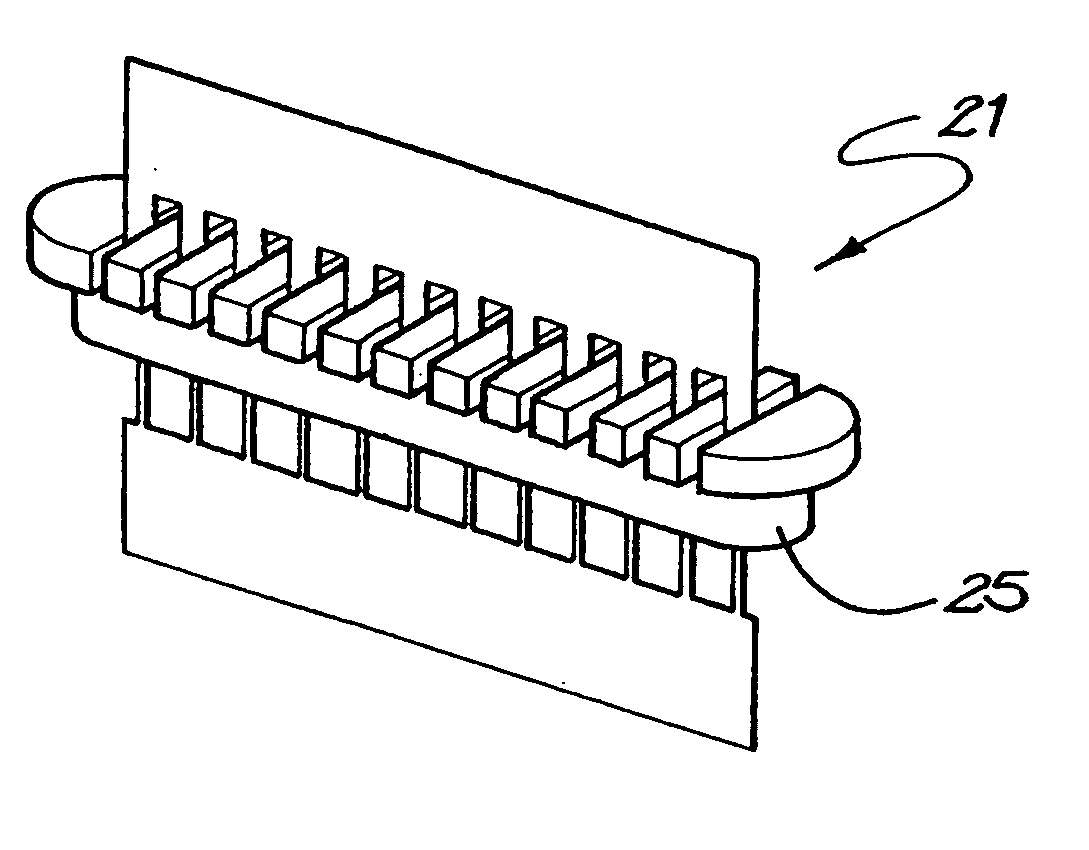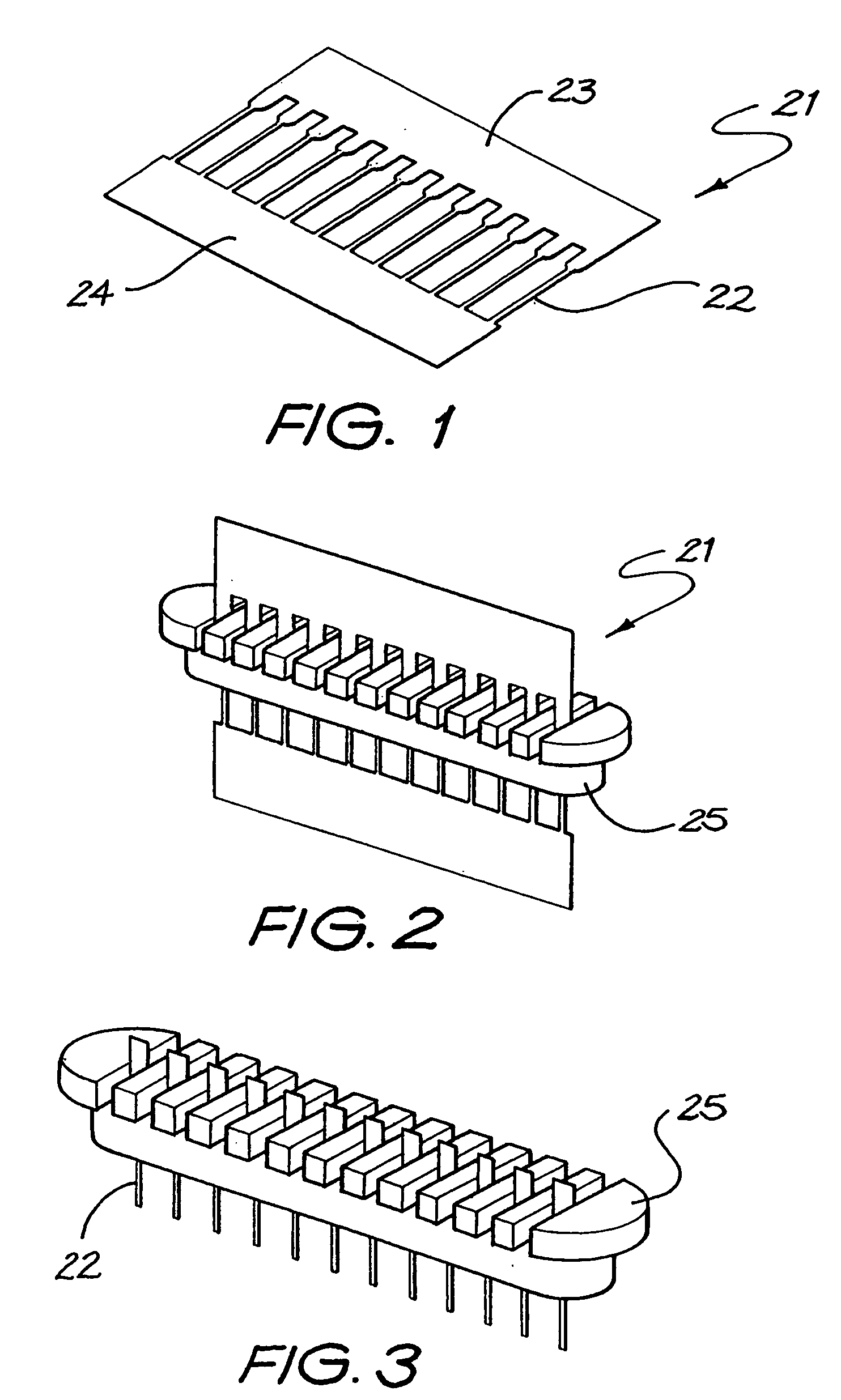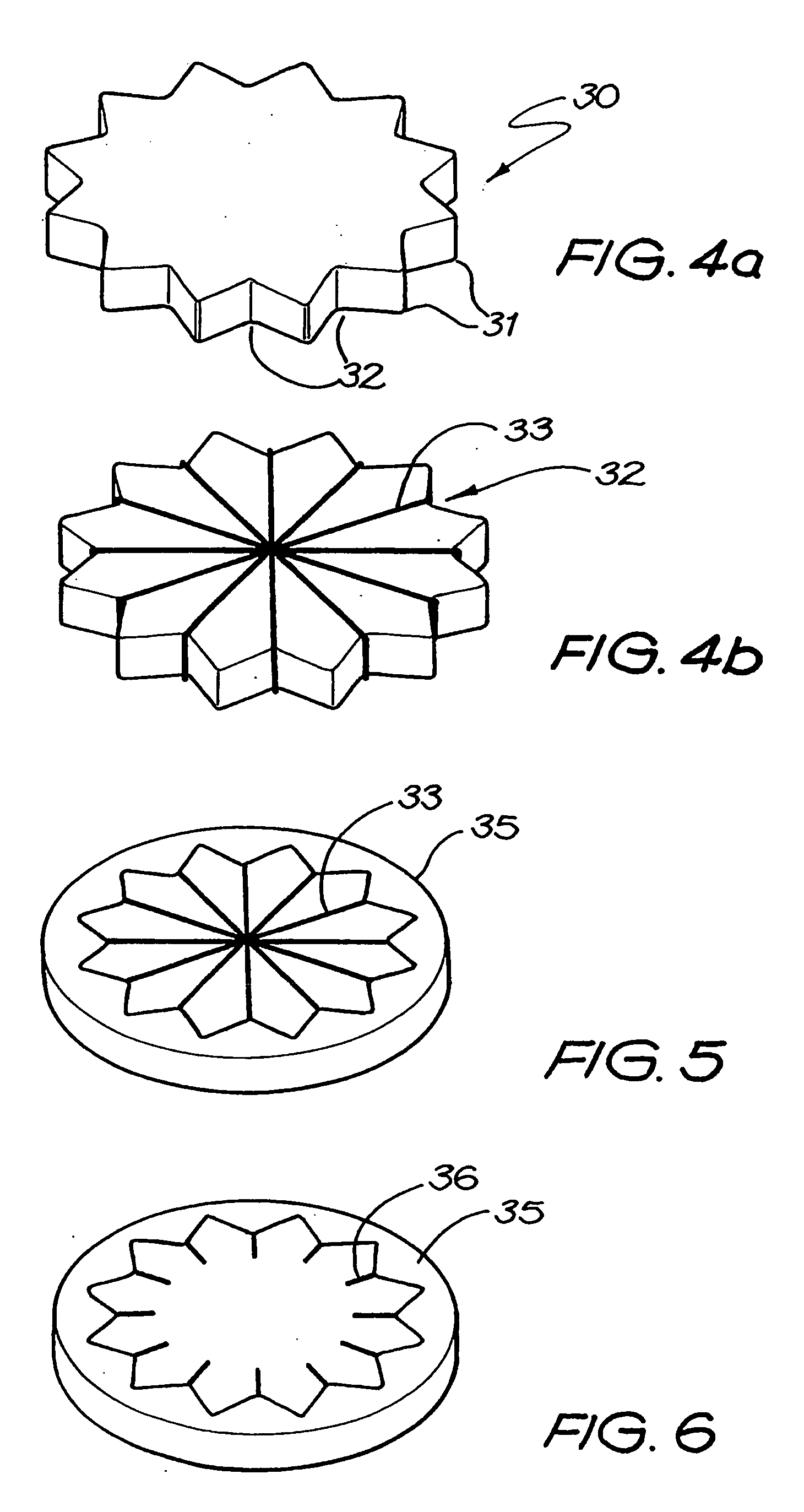Feedthrough for electrical connectors
- Summary
- Abstract
- Description
- Claims
- Application Information
AI Technical Summary
Benefits of technology
Problems solved by technology
Method used
Image
Examples
Embodiment Construction
[0146] The steps of one embodiment of a method of forming an electrically conducting feedthrough according to the present invention are depicted in FIG. 11.
[0147] The method 10 comprises a first step 11 of forming an electrically conductive structure comprising a sacrificial component and non-sacrificial component. Different examples of such structures are depicted in FIGS. 1, 4b, 7, and 10b.
[0148] The method further comprises a step 12 of coating or moulding a non-electrically conductive insulative member on to at least a portion of the non-sacrificial component and not on to at least a portion of the sacrificial component of the conductive structure.
[0149] Still further, the method comprises a step 13 of then removing at least that portion of the sacrificial component of the conductive structure on to which the insulative member has not been coated or moulded.
[0150] Following removal of the sacrificial component of the conductive structure, the green body of the insulator can ...
PUM
| Property | Measurement | Unit |
|---|---|---|
| Length | aaaaa | aaaaa |
| Electrical conductivity | aaaaa | aaaaa |
| Shape | aaaaa | aaaaa |
Abstract
Description
Claims
Application Information
 Login to View More
Login to View More - R&D
- Intellectual Property
- Life Sciences
- Materials
- Tech Scout
- Unparalleled Data Quality
- Higher Quality Content
- 60% Fewer Hallucinations
Browse by: Latest US Patents, China's latest patents, Technical Efficacy Thesaurus, Application Domain, Technology Topic, Popular Technical Reports.
© 2025 PatSnap. All rights reserved.Legal|Privacy policy|Modern Slavery Act Transparency Statement|Sitemap|About US| Contact US: help@patsnap.com



